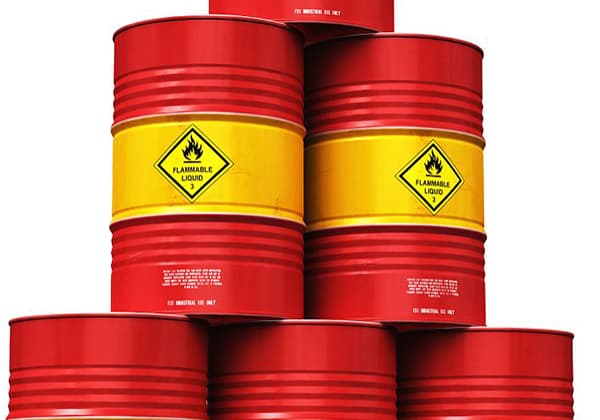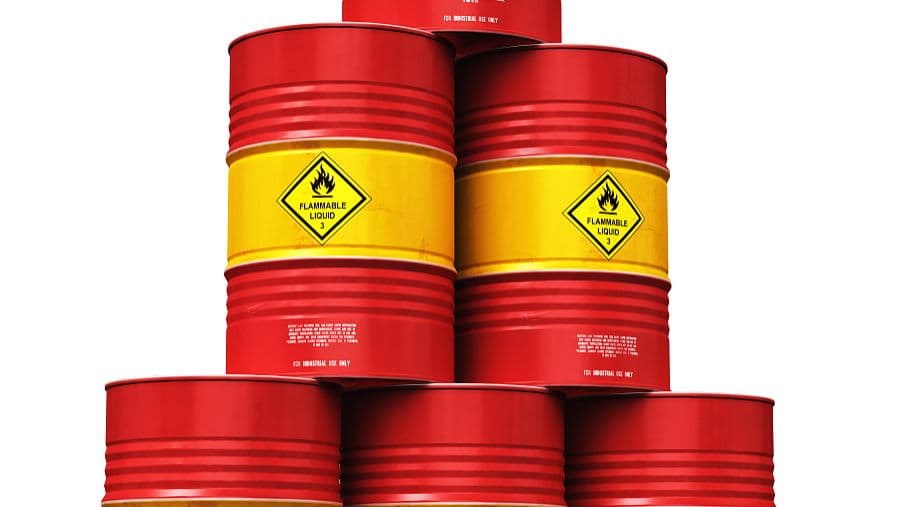
Have you ever considered how much rust costs our economy each year? This article explores the staggering impact of metal corrosion and introduces various types of antirust oils that protect our machinery and infrastructure. Learn how these oils work and discover which type is best suited for different applications.

According to industry data, metal corrosion causes annual direct economic losses ranging from 2% to 4% of global GDP, highlighting the significant financial impact of this pervasive issue.
Studies indicate that approximately one-third of metals produced worldwide are ultimately scrapped due to corrosion-related degradation, underscoring the critical need for effective rust prevention strategies in industrial applications.
To combat corrosion, various protection methods are employed, with the application of corrosion inhibitors being one of the most widely adopted and cost-effective approaches for safeguarding metal products across diverse industries.
The visual manifestation of corrosion varies by metal type: iron oxide presents as reddish-brown, copper patina appears green, while aluminum and zinc corrosion products typically form white deposits. These color variations serve as important indicators for identifying the type and extent of corrosion in different metallic materials.
From an industrial standpoint, preventing the corrosion of ferrous materials, particularly iron and steel, is of paramount importance due to their widespread use and susceptibility to oxidation in various environments.
Antirust oil, a specialized protective formulation, comprises oil-soluble corrosion inhibitors, carefully selected base oils, and performance-enhancing additives. This synergistic combination provides effective barrier protection and active corrosion inhibition for metal surfaces.
The versatility of antirust oils makes them indispensable in numerous industrial applications, including:
These oils play a crucial role in extending the service life of metal products, reducing maintenance costs, and improving overall product reliability across multiple sectors of the manufacturing industry.

According to different properties and uses, antirust oil can be divided into the following categories:
Displacement anti-rust oils primarily utilize strongly adsorptive sulfonates as their main corrosion inhibitors. These oils effectively displace water and sweat from metal surfaces, preventing corrosion caused by human perspiration and environmental moisture.
The mechanism of protection is twofold: firstly, the oil physically displaces corrosive elements; secondly, it forms a tenacious protective film on the metal surface through adsorption. This film acts as a barrier, preventing the ingress of corrosive media. Due to this dual action, displacement anti-rust oils are extensively employed for inter-process corrosion prevention and as a surface pretreatment prior to long-term rust prevention measures.
Several formulations of displacement anti-rust oils can serve directly for both sealing and corrosion protection. According to the Chinese national standard SH0367-92 for displacement rust preventive oils, these products are categorized into four grades: No. 1, No. 2, No. 3, and No. 4. Each grade is tailored for specific applications and environmental conditions, offering varying levels of protection and film thickness.
Key features of high-quality displacement anti-rust oils include:
When selecting a displacement anti-rust oil, factors such as the metal substrate, expected storage conditions, duration of protection required, and any subsequent processing steps should be carefully considered to ensure optimal corrosion prevention.
These antirust oils contain volatile petroleum solvents or are diluted with solvents for application at ambient temperatures. They include solvent-diluted hard film, soft film, and removable antirust oils, among others.
Upon application to a metal surface, the solvent evaporates naturally, leaving a uniform protective film. This type is widely used for corrosion prevention on large mechanical equipment surfaces and can effectively protect raw materials and equipment stored in outdoor environments.
The protective mechanism involves the formation of a barrier film after solvent evaporation, which isolates the metal surface from corrosive elements such as moisture and oxygen. The film composition typically includes corrosion inhibitors, which provide active protection by chemically interacting with the metal surface.
However, workpieces coated with these oils should only be brought into contact or packaged after complete solvent evaporation to prevent adhesion. Consequently, they are best suited for components with simple geometries and are less effective for complex structures with numerous small cavities or for internal protection.
The petrochemical industry standard for solvent-diluted antirust oils is SH0366-92, while the national standard GB4879-85B2 further classifies them into four types:
When selecting a solvent-diluted antirust oil, factors such as expected storage duration, environmental conditions, and the specific metal alloy should be considered to ensure optimal protection and compatibility with subsequent manufacturing processes.
Sealed antirust oil is a specialized protective coating with several key characteristics: ambient temperature application, solvent-free formulation, thin film formation, inter-process and long-term storage rust protection, excellent lubricating oil compatibility, and no cleaning requirement upon unsealing.
Two primary categories of sealed antirust oils exist:
(1) Immersion Type
This method involves fully submerging products in a container filled with antirust oil. While adding up to 2% corrosion inhibitor is acceptable, regular incorporation of antioxidants is crucial to prevent oxidative degradation of the oil. The immersion process ensures complete coverage, particularly beneficial for complex geometries or internal surfaces.
(2) Coating Type
These are low-viscosity oils designed for direct application as thin protective layers. They require a higher concentration of corrosion inhibitors, often utilizing a synergistic blend of multiple inhibitors for enhanced protection. In some applications, rheology modifiers such as polyisobutylene are added to increase film thickness and improve adhesion to metal surfaces.
When combined with appropriate external packaging, sealed antirust oils provide excellent long-term indoor storage protection. The effectiveness of this method relies on creating a continuous barrier between the metal surface and the environment, inhibiting moisture and corrosive agents from reaching the substrate.
The national standard governing sealed antirust oil in China is GB4879-85 B3, which outlines specific requirements for composition, performance, and testing methods. Adherence to this standard ensures consistent quality and reliability in industrial applications.
For optimal protection, factors such as the specific metal alloy, environmental conditions, storage duration, and any subsequent manufacturing processes should be considered when selecting and applying sealed antirust oils. Regular inspection and maintenance of the protective coating may be necessary for extended storage periods.
Emulsified antirust oil is an advanced corrosion protection solution that combines a rust inhibitor, emulsifier, and base oil. When diluted with water, it forms a stable oil-in-water emulsion, offering a cost-effective and environmentally friendly alternative to traditional rust preventatives. This formulation provides several key advantages:
The domestic standard for emulsified antirust oil in China is GB4879-85 B4, which specifies the requirements for composition, performance, and testing methods. When selecting an emulsified antirust oil, factors such as protection duration, compatibility with subsequent processes, and specific environmental conditions should be considered to ensure optimal performance.
This multifunctional oil combines superior lubrication properties with effective corrosion protection, offering a dual-purpose solution for industrial applications.
Engineered for immediate use, this oil eliminates the need for removal of sealing compounds post-unsealing, streamlining maintenance processes and reducing downtime. Its versatility extends to serving as both a test run oil and a long-term lubricant, negating the requirement for oil changes after initial testing phases. This characteristic makes it particularly valuable in systems demanding continuous lubrication or sealing.
The oil’s formulation can be tailored to specific applications, resulting in a range of specialized variants:
Each variant is formulated with specific additive packages to meet the unique demands of its intended application, balancing factors such as viscosity, oxidation resistance, and corrosion inhibition properties.
Anti-rust grease is a specialized protective compound formulated by incorporating corrosion inhibitors into a base of industrial petroleum jelly or petroleum waxes, such as paraffin and microcrystalline waxes. This formulation creates a highly effective barrier against moisture and oxidation.
The application of anti-rust grease typically employs a hot coating method for optimal sealing and coverage. This technique ensures thorough penetration and adherence to the metal surface, creating a robust protective layer.
Key characteristics of anti-rust grease include:
These properties make anti-rust grease ideal for long-term preservation of mechanical components, precision machinery, and large industrial equipment, particularly in challenging environments or during extended storage or shipping.
While highly effective, the application and removal of anti-rust grease present some challenges:
To address these challenges, high-quality anti-rust greases are engineered with advanced additives to enhance thermal stability and oxidation resistance, ensuring optimal performance throughout the protection lifecycle.








